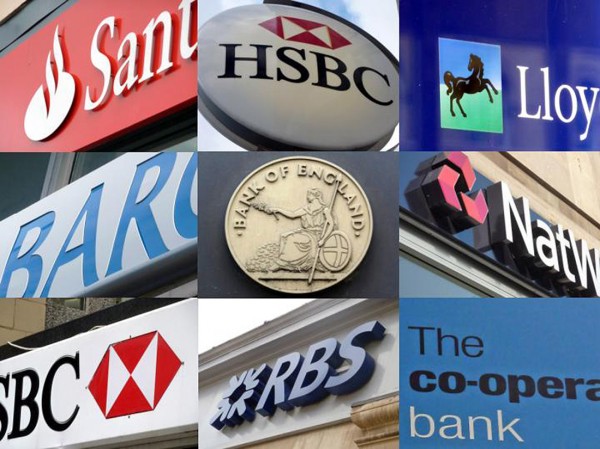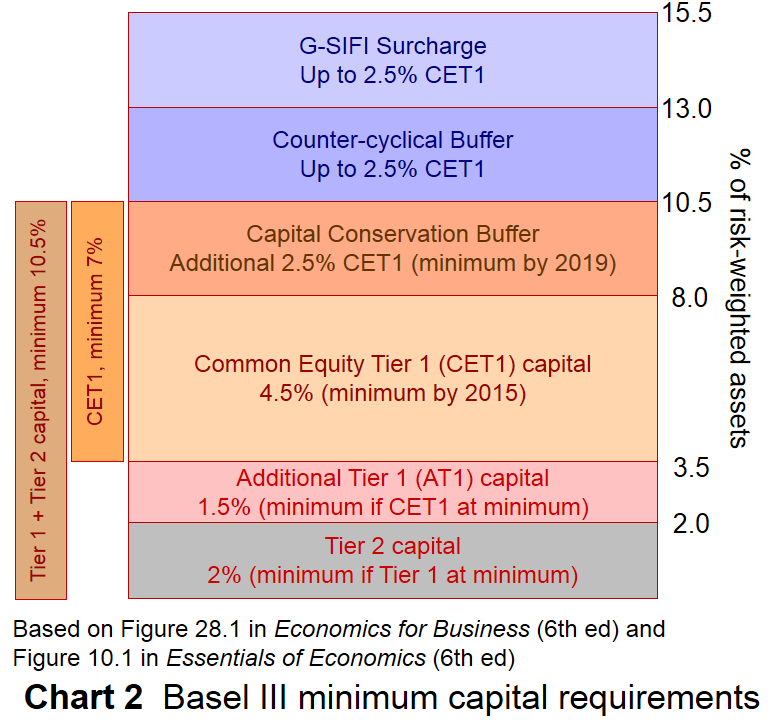 According to the BBC’s Joe Lynam, “Britain has the most competitive and dynamic retail environment in the world, which attracts shoppers globally.” It is perhaps this fact which may save BHS, with new owners being attracted by such an opportunity. BHS is soon expected to file for administration, with debts of more than £1.3 billion and having failed to secure the loan needed to keep it afloat. If this company collapses, it will bring an end to the life of an 88 year old giant.
According to the BBC’s Joe Lynam, “Britain has the most competitive and dynamic retail environment in the world, which attracts shoppers globally.” It is perhaps this fact which may save BHS, with new owners being attracted by such an opportunity. BHS is soon expected to file for administration, with debts of more than £1.3 billion and having failed to secure the loan needed to keep it afloat. If this company collapses, it will bring an end to the life of an 88 year old giant.
The British retail scene has certainly changed over the past decade, with names such as Woolworths and Comet disappearing – could BHS be the next casualty of the changing retail climate? In the world of retail, tastes change quickly and those stores who fail to change with the times are the ones that suffer. One of the factors behind the downfall of BHS is the ‘dated’ nature of its stores and fashions. As clothing outlets such as Zara, Oasis and Next have continued to change with the times, commentators suggest that BHS continues with a trading offer from the 1980s. With the online shopping trend, many household names adapted their strategy, but BHS failed to do so and the second chance that BHS asked the public for when Sir Philip Green, its former owner, sold BHS in 2015 hasn’t materialised.
With administrators ready to be brought in and thousands of jobs hanging in the balance, the administrators will be looking at methods to attract funding, new owners or so-called ‘cherry pickers’ who may be interested in buying up the more profitable stores. Some of their stores remain in prime locations and deliver a tidy profit and it is perhaps these gems, together with the tradition that British Home Stores brings that may yet see the company saved. The outcome for BHS will not only affect the jobs of its employees, but will affect the pensions of thousands of workers. The BHS pension fund currently has a deficit of £576 million and so the Pension Protection Fund will have to look closely at the situation before thinking about issues a contribution notice to those connected with the fund.
A deal was on the cards last week, with BHS owner Dominic Chappell in talks with Mike Ashley’s Sports Direct, but the high debts and pensions deficit appears to have deterred this deal. The failing fortunes of BHS have now come back to haunt former owner, Sir Philip Green, who in March 2015, sold the business for just £1. Sir Philip may return to save the day, but the options for this once giant of the British high street are rather limited. The following articles consider the fortunes of BHS.
BHS seeks Sports Direct lifeline as it heads for collapse The Guardian, Graham Ruddick (24/04/16)
BHS expected to file for administration on Monday BBC News (25/04/16)
Thousands of BHS workers face anxious wait amid administration fears The Telegraph (25/04/16)
BHS administration: ‘Imminent bankruptcy’ puts 11,000 jobs at risk Independent, Peter Yeung (25/04/16)
Up to 11,000 jobs face the axe as BHS is expected to announce collapse of chain after efforts to find rescuer failed Mail Online, Neil Craven (24/04/16)
BHS nears collapse putting 11,000 jobs at risk Sky News (25/04/16)
BHS set to file for administration after sales talks fail Financial Times, Murad Ahmed (25/04/16)
Questions
- Using a demand and supply diagram, can you explain some of the factors that have contributed to the difficult position that BHS finds itself in?
- Now, can you use a diagram showing revenues and profits and explain the current position of BHS?
- What type of market structure does BHS operate in? Can this be used to explain why it is in its current position?
- How has the company failed in adapting its business strategy to the changing times?
- Looking back at the history of BHS, can you apply the product life cycle to this store?
- If another company is considering purchasing BHS, or at least some of its stores, what key information will it need and what might make it likely to go ahead with such a purchase?
 On 15 September 2008, Lehman Brothers, the fourth-largest investment bank in the USA, filed for bankruptcy. Although the credit crisis had been building since mid 2007, the demise of Lehmans was a pivotal event in the unfolding of the financial crisis and the subsequent severe recession in most developed economies. Banks were no longer seen as safe and huge amounts of government money had to be poured into banks to shore up their capital and prevent further bankruptcies. Partial nationalisation seemed the only way of rescuing several banks and with it the global financial system.
On 15 September 2008, Lehman Brothers, the fourth-largest investment bank in the USA, filed for bankruptcy. Although the credit crisis had been building since mid 2007, the demise of Lehmans was a pivotal event in the unfolding of the financial crisis and the subsequent severe recession in most developed economies. Banks were no longer seen as safe and huge amounts of government money had to be poured into banks to shore up their capital and prevent further bankruptcies. Partial nationalisation seemed the only way of rescuing several banks and with it the global financial system.
 A deep and prolonged recession followed (see Chart 1: click here for a PowerPoint). In response, governments pursued expansionary fiscal policies – at least until worries about rising government deficits and debt caused a lurch to austerity policies. And central banks pursued policies of near zero interest rates and subsequently of quantitative easing. But all the time debate was taking place about how to reform banking to prevent similar crises occurring in the future.
A deep and prolonged recession followed (see Chart 1: click here for a PowerPoint). In response, governments pursued expansionary fiscal policies – at least until worries about rising government deficits and debt caused a lurch to austerity policies. And central banks pursued policies of near zero interest rates and subsequently of quantitative easing. But all the time debate was taking place about how to reform banking to prevent similar crises occurring in the future.
Solutions have included reform of the Basel banking regulations to ensure greater capital adequacy.  The Basel III regulations (see Chart 2) demand considerably higher capital ratios than the previous Basel II regulations.
The Basel III regulations (see Chart 2) demand considerably higher capital ratios than the previous Basel II regulations.
Other solutions have included proposals to break up banks. Indeed, just this week, the Lloyds Banking Group has hived off 631 of its branches (one sixth of the total) into a newly reformed TSB. Another proposal is to ring-fence the retail side of banks from their riskier investment divisions. In both cases the aim has been to avoid the scenario where banks are seen as too big to fail and can thus rely on governments to bail them out if they run into difficulties. Such reliance can make banks much more willing to take excessive risks. Further details of the new systems now in place are given in the Robert Peston article below.
But many critics maintain that not nearly enough has been done. Claims include:
• The Basel III rules are not tough enough and banks are still being required to hold too little capital.
• Rewards to senior bankers and traders are still excessive.
• The culture of banking, as a result, is still too risk loving in banks’ trading arms, even though they are now much more cautious about lending to firms and individuals.
• This caution has meant a continuing of the credit crunch for many small businesses.
• Higher capital adequacy ratios have reduced bank lending and have thus had a dampening effect on the real economy.
• The so-called ring-fences may not be sufficient to insulate retail banking from problems in banks’ investment divisions.
• Banks are not being required to hold sufficient liquidity to allow them to meet customers’ demands for cash in all scenarios.
• Banks’ reliance on each other still leaves a systemic risk for the banking system as a whole.
• Fading memories of the crisis are causing urgency to tackle its underlying problems to diminish.
• Problems may be brewing in less regulated parts of the banking world, such as the growing banking sector in China.
The following articles look at the lessons of the banking crisis – those that have been learned and those that have not. They look at the measures put in place and assess whether they are sufficient.
Lehman Brothers collapse, five years on: ‘We had almost no control’ The Guardian, Larry Elliott and Jill Treanor (13/9/13)
Lehman Brothers collapse: five years on, we’re still feeling the shockwaves The Guardian, Larry Elliott (13/9/13)
Five years after Lehman, could a collapse happen all over again? The Observer, Larry Elliott and Jill Treanor (15/9/13)
Five years after Lehman, all tickety-boo? BBC News, Robert Peston (9/9/13)
What have we learned from the bank crash? Independent, Yalman Onaran, Michael J Moore and Max Abelson (14/9/13)
We’ve let a good financial crisis go to waste since Lehman Brothers collapsed The Telegraph, Jeremy Warner (12/9/13)
 The Lehman legacy: Lessons learned? The Economist (9/9/13)
The Lehman legacy: Lessons learned? The Economist (9/9/13)
The dangers of debt: Lending weight The Economist (14/9/13)
The Lehman anniversary: Five years in charts The Economist (14/9/13)
Questions
- Why did Lehman Brothers collapse?
- Explain the role of the US sub-prime mortgage market in the global financial crisis of 2007/8.
- In the context of banking, what is meant by (a) capital adequacy; (b) risk-based capital adequacy ratios; (c) leverage; (d) leverage ratios?
- Explain the Basel III rules on (a) risk-based capital adequacy (see the textbook and the chart above); (b) non-risk-based leverage (introduced in 2013: see here for details).
- Explain and comment on the following statement by Adair Turner: ‘We created an over-leveraged financial system and an over-leveraged real economy. We created a system such that even if the direct cost of bank rescue was zero, the impact of their near-failure on the economy was vast.’
- Under what circumstances might the global financial system face a similar crisis to that of 2007/8 at some point in the future?
- Why is there an underlying conflict between increasing banks’ required capital adequacy and ensuring a sufficient supply of credit to consumers and business? What multiplier effects are likely to occur from an increase in the capital adequacy ratio?
 Every firm has been hit by the recession and for most, it’s been bad news. However, the latest firm to file for bankruptcy is an interesting case, as the causes extend well beyond a weak economy. The company in question? Eastman Kodak. Renowned for inventing the hand-held camera and being the market leader, selling 90% of photographic film and 85% of all cameras in the USA in 1976, the company has since seen a large change in its fortunes.
Every firm has been hit by the recession and for most, it’s been bad news. However, the latest firm to file for bankruptcy is an interesting case, as the causes extend well beyond a weak economy. The company in question? Eastman Kodak. Renowned for inventing the hand-held camera and being the market leader, selling 90% of photographic film and 85% of all cameras in the USA in 1976, the company has since seen a large change in its fortunes.
Massive competition has emerged from all over the globe and the company has seemed to lag behind the digital revolution. Arguably, unwilling to take risks and making some strategic errors, Kodak saw its stock tumble from $94 in 1997 to under $1 per share in 2012. Since 2004, Kodak has only seen one profitable year. With massive competitors in the world of digital photography, the market has become a highly competitive one. As Rupert Goodwins, the editor of technology website ZDNet said:Kodak made all its money from selling film, then the digital camera came along and now no-one’s buying film. It’s not like they didn’t see it coming. Kodak hesitated because they didn’t want to eviscerate their business.
By filing for bankruptcy, Kodak is protected and its operations will continue for the time being, perhaps giving the company time to have a rethink and a reorganization. Eastman Kodak has previously tried to take a new direction and has been moving away from film and towards its printer, software and packing businesses. The problem is that these markets already have some very strong competitors: Hewlett Packard, Canon and Epson. It’s a difficult job to break into this market and gain market share.
The future of the company is very much in the balance and as reorganization of its operations looks inevitable, so does a loss of jobs. Thank goodness it only employs some 19,000 workers and not the 145,000 it did back in its day. Bankruptcy will certainly keep the creditors at bay for the time being, but it is by no means a long term solution to the company’s ailing profits. The following articles consider this ‘Kodak moment’.
Eastman Kodak files for bankruptcy protection BBC News (19/1/12)
Eastman Kodak files for bankruptcy The Christian Science Monitor, Ben Dobbin (19/1/12)
Kodak: From Brownie and roll film to digital disaster BBC News, James Cowling (19/1/12)
Kodak files for bankruptcy CNN Money, Aaron Smith and Hibah Yousuf (19/1/12)
Photography pioneer Kodak files for bankruptcy Reuters, Jonathan Stempel (19/1/12)
Kodak: 30 fascinating facts The Telegraph, Matthew Sparkes (19/1/12)
Kodak: why the moment has oassed Guardian, Simon Waldman (19/1/12)
Questions
- Using the product life cycle, explain where Kodak currently lies.
- To what extent are Kodak’s current problems related to the obsolescence of their products and not the recession?
- What strategic errors have Kodak made?
- What has caused Kodak’s collapse in share prices and profitability?
- Why is Eastman Kodak finding it difficult to gain market share in other markets, such as printing?
- What options are open to Kodak for the future if it is to become profitable once more?
Today (16/6/11) in Greece, the Prime Minister is trying to form a new government that will help the country tackle its large and growing debts. Austerity measures have been put in place by the Greek government and these cuts and subsequent job losses (unemployment now stands at 15.9%) have resulted in massive riots.
Critics of the eurozone and Greek membership are suggesting that the price Greece has to pay to remain a member might be too high. Billions of euros have already been given to the bankrupt country and yet it seems to have made little difference – more money is now needed, but Finance Ministers have so far been unable to agree on how best to finance another bailout. These concerns have adversely affected financial markets, as investors sell their shares in light of the economic concerns surrounding Greece. The trends in financial markets over recent weeks suggest a growing feeling that Greece may default on its debt.
If an agreement isn’t reached between European leaders and/or Greece doesn’t accept the terms, then it could spell even more trouble and not just for the Greek economy and the eurozone. Banks across Europe have lent money to Greece and if an agreement isn’t reached, then this will mean losses for the private sector. Whilst these losses may be manageable, further trouble may arise due to contagion. Other countries with substantial debts, including Spain, Ireland and Portugal could mean a significant increase in these potential losses.
As the crisis in Greece continues, doubts remain over whether the European leaders even know how to deal with the crisis and this creates a lack of confidence in the markets. Activities over the coming weeks will play a large part in the future of Greece’s eurozone membership, trends in financial markets and the direction of the UK economy. The following articles consider Greece’s debt crisis.
Greece debt crisis sends financial markets reeling BBC News (16/6/11)
Euro slumps vs Swissie, Greece intensifies concern Reuters (16/6/11)
EU and IMF agree Greek debt deal Financial Times, Peter Spiegel (16/6/11)
Greece crisis: Commissioners fear ‘future of Eurozone’ BBC News, Joe Lynam (15/6/11)
Stocks slump as Greece crisis turns violent Bloomberg Business Week, Pan Pylas (15/6/11)
Euro slides as Greek default fears deepen Financial Times, Peter Garnham (16/6/11)
Germany insists all of EU must pay for Greece bailout Guardian, Ian Traynor (15/6/11)
US stocks slump on US, Greek woes Associated Press (16/6/11)
More time to argue about Greece BBC News, Stephanie Flanders (16/6/11)
Greece: Eurozone ministers delay decision on vital loan BBC News (20/6/11)
Greece crisis: Revolution in the offing? BBC News, Gavin Hewitt (19/6/11)
Greece crisis: Not Europe’s Lehman (it could be worse) BBC News, Robert Peston (20/6/11)
Greek debt crisis: eurozone ministers delay decision on €12bn lifeline Guardian, Ian Traynor (20/6/11)
Eurozone must act before Greek crisis leads to global meltdown, IMF warns Guardian, Larry Elliott (20/6/11)
Greece: Private-sector voluntary aid may be impossible BBC News, Robert Peston (21/6/11)
Greece crisis and the best way to cook a lobster BBC News, Stephanie Flanders (22/6/11)
Questions
- What is meant by contagion and why is this a potential problem?
- What are the options open to European leaders to finance the bail out?
- If an agreement is not reached or Greece do no accept the terms, how might the UK economy be affected?
- What has been the impact of recent events in Greece and Europe on financial markets and currencies across the world? Explain your answer.
- Why are critics suggesting that the price of Greece remaining in the Eurozone might be too high? If Greece was not a member state what would it mean it could do differently to help it deal with its mounting debts?
Blockbuster US has become the latest in a long line of companies filing for bankruptcy. With huge debts and a need to restructure the business, given the huge competition in America, Blockbuster has made agreements with its creditors to cut its debts from $1 billion to $100 million. Blockbuster has suffered from mail-order and online film rental services, in particular in America.
Blockbuster is a worldwide phenomenon with stores ranging from the UK to Mexico. However, as legally separate entities, the non-US branches of Blockbuster are protected from the bankruptcy. While the UK branches will remain unaffected, there are concerns that they may suffer from a lack of new DVD stock, especially with the approach of Christmas.
As news of Blockbuster’s bankruptcy spread, Netflix – a key competitor – saw its shares soar. Netflix was a catalyst in the demise of Blockbuster US and it has seen its market share increase rapidly over the past few years, with subscribers increasing from 1 million in 2002 to 15 million in 2010. Blockbuster responded by ending late fees and started its own online services, but it has been unable to compete effectively in this competitive market. Although restructuring of Blockbuster has begun, only time will tell what the future is for this once dominant movie rental firm.
Blockbuster files for Bankruptcy in US BBC News (23/9/10)
Blockbuster fizzles in US, but renters overseas haven’t switched to Netflix – yet The Christian Science Monitor, Stephen Kurczy (23/9/10)
Blockbuster files for Chapter 11 protection Guardian, Richard Wachman (23/9/10)
Blockbuster wins Court’s approval to draw $20 million from bankruptcy loan Bloomberg, David McLaughlin and Tiffany Kary (23/9/10)
Fitch lowers debt rating on Blockbuster Bloomberg BusinessWeek (23/9/10)
Netflix shares hit high after Blockbuster bankruptcy Reuters, Sue Zeidler (23/9/10)
Debt, changing media habits topple Blockbuster The Associated Press, Mae Anderson (23/9/10)
Questions
- What are the key factors behind Blockbuster’s decline?
- New competitors have entered the market for movie rental. Illustrate this on a diagram. How can we use this to explain Blockbuster’s problems?
- Online services and mail-order have become increasingly popular services in this market. Is the extra competition in the market in the best interests of consumers?
- What type of market structure is the rental movie industry? Explain your answer.
- What type of legal structure does Blockbuster operate under? What are the key advantages and disadvantages of this?
- Why are the non-US chains not affected by the bankruptcy of Blockbuster US?
- Have a look at the share prices of Blockbuster and Netflix. What has happened to them over rthe past year? Is this consistent with recent developments?
 According to the BBC’s Joe Lynam, “Britain has the most competitive and dynamic retail environment in the world, which attracts shoppers globally.” It is perhaps this fact which may save BHS, with new owners being attracted by such an opportunity. BHS is soon expected to file for administration, with debts of more than £1.3 billion and having failed to secure the loan needed to keep it afloat. If this company collapses, it will bring an end to the life of an 88 year old giant.
According to the BBC’s Joe Lynam, “Britain has the most competitive and dynamic retail environment in the world, which attracts shoppers globally.” It is perhaps this fact which may save BHS, with new owners being attracted by such an opportunity. BHS is soon expected to file for administration, with debts of more than £1.3 billion and having failed to secure the loan needed to keep it afloat. If this company collapses, it will bring an end to the life of an 88 year old giant.



